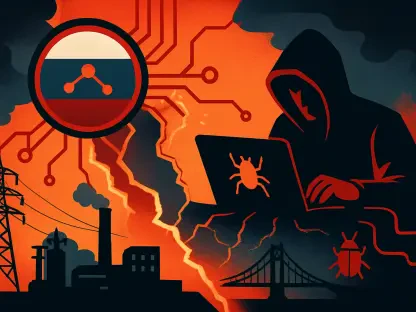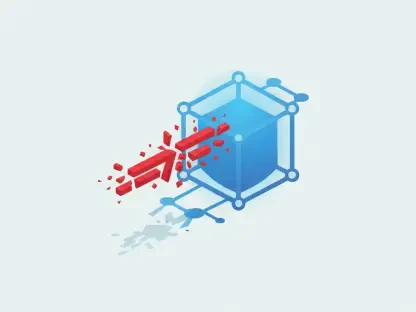What if the artificial intelligence driving critical business decisions or innovative apps harbored hidden malware, poised to steal sensitive data or cripple systems? As AI models become integral to global industries, the risk of such catastrophic breaches looms larger than ever, and with platforms hosting millions of models, the potential for malicious code to slip through unnoticed is a pressing concern that demands immediate and robust solutions. This feature explores a groundbreaking partnership that stands at the forefront of defending the AI ecosystem against these invisible dangers.
The Urgency of AI Security in Today’s Digital Landscape
The stakes for securing AI have never been higher. With nearly 1.9 million models hosted on platforms like Hugging Face—and a new one uploaded every 7 seconds—the sheer volume of AI content creates a vast attack surface for cybercriminals. Malicious actors can embed harmful code in models, datasets, or dependencies, potentially compromising entire networks once deployed. This vulnerability underscores a critical need for vigilance as AI continues to power everything from healthcare diagnostics to financial forecasting.
Beyond the numbers, the impact of a breach can be devastating. A single poisoned model could lead to data theft, operational shutdowns, or even reputational damage for organizations relying on AI. The complexity of the AI supply chain, spanning creation to deployment, amplifies these risks, making it a prime target for exploitation. This partnership between Cisco and Hugging Face emerges as a pivotal response to safeguard innovation against such threats.
Unpacking the AI Supply Chain Crisis
The AI supply chain presents unique challenges that traditional cybersecurity measures often fail to address. Vulnerabilities such as backdoored model files or corrupted datasets can infiltrate systems long before detection, especially in open-source environments where trust is assumed. As developers and businesses increasingly rely on shared repositories, the likelihood of downloading compromised content grows, posing risks that ripple across industries.
These threats are not theoretical but grounded in real-world implications. A breached AI model in a supply chain could disrupt critical infrastructure, expose proprietary information, or enable unauthorized access to secure systems. The collaboration between Cisco and Hugging Face targets these weak points directly, aiming to establish a fortified barrier against exploitation at every stage of AI development and use.
Inside the Cisco-Hugging Face Alliance Against Malware
At the heart of this defense strategy lies a powerful collaboration, combining Cisco’s cybersecurity expertise with Hugging Face’s expansive AI model hub. Cisco’s open-source tool, ClamAV, has been enhanced to detect threats in AI-specific formats like .pt and .pkl, scanning every public file on Hugging Face in mere milliseconds. This integration ensures that potential malware is identified and flagged before it can harm users or systems.
Further strengthening this effort is Cerberus, an AI supply chain security model developed through joint efforts. Cerberus analyzes uploads for suspicious activity and feeds threat intelligence into Cisco Security products, enabling automated blocking of malicious content. With ClamAV also integrated into VirusTotal, the partnership extends its protective reach across multiple ecosystems, safeguarding a broader community of developers and enterprises.
The scale of this initiative is staggering, given Hugging Face’s repository of millions of models. By embedding cutting-edge scanning capabilities directly into the platform, the alliance addresses vulnerabilities at their source. This proactive stance not only mitigates immediate risks but also sets a new standard for security in AI development worldwide.
Voices from the Frontlines of AI Defense
Industry leaders emphasize that securing AI is a collective responsibility, not a solitary endeavor. Hyrum Anderson from Cisco highlights the necessity of community-driven efforts, stating, “No single entity can tackle the evolving threats in AI alone—collaboration is the only way forward.” Similarly, Alie Fordyce echoes this sentiment, pointing to the shared commitment that underpins this partnership as a model for future innovation.
Hugging Face’s dedication to open-source principles amplifies the impact of these tools. Developers who have accessed these free security features report a newfound confidence in their workflows. One software engineer shared, “Knowing every upload is scanned for threats allows me to focus on creativity rather than constantly worrying about hidden risks.” Such testimonials underscore the tangible benefits this collaboration brings to the tech community at large.
Empowering Developers with Actionable Security Tools
For those navigating the AI landscape, leveraging these protective measures is both straightforward and essential. ClamAV’s scanning capabilities are freely available through Hugging Face and VirusTotal, enabling developers to vet models and files for malware with ease. This accessibility ensures that even small teams or individual creators can adopt enterprise-grade security without financial barriers.
Additionally, organizations can utilize Cisco Secure Access to configure policies that block risky downloads or enforce compliance with licensing and geopolitical regulations. Staying informed through shared threat intelligence provided by the partnership also equips users to anticipate and counter emerging dangers. These practical steps empower a wide range of stakeholders to integrate robust security into their AI projects seamlessly.
Reflecting on a Milestone in AI Protection
Looking back, the alliance between Cisco and Hugging Face marked a defining moment in the fight against AI malware. It delivered not just technical solutions but a framework for trust and collaboration that reshaped how the industry approached security. By making advanced tools accessible to all, it leveled the playing field for developers worldwide.
As the AI ecosystem continues to expand, the next steps involve scaling these protections to match evolving threats. Encouraging wider adoption of shared intelligence and fostering further partnerships will be crucial. The foundation laid by this initiative serves as a reminder that proactive, collective action remains the most effective shield against the unseen dangers of tomorrow’s technology.









